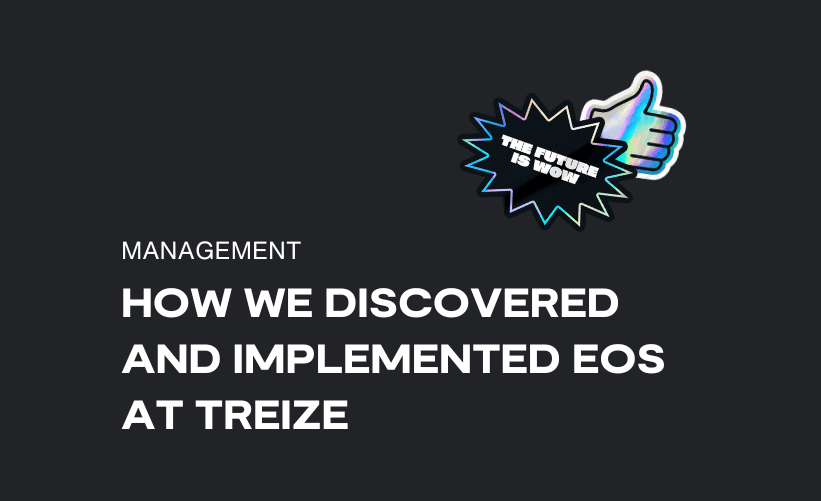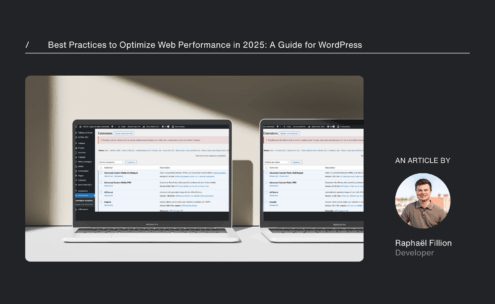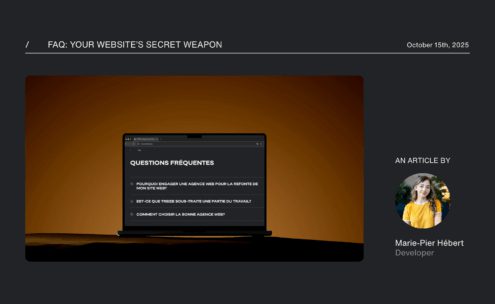At TREIZE, we’re always on the lookout for new ways to evolve. That’s why, for a while, we set aside a few hours every Thursday afternoon to refine our processes, test new ideas, and tackle any issues that cropped up. On paper, it sounded ideal: everyone could help drive the company forward and grow within their role.
Over time, however, we ran into a few challenges:
- Scattered efforts: We launched several initiatives, but each team moved forward independently. The result? We racked up small improvements… without any real global cohesion.
- Lack of clarity on the vision: Even though we shared our ambitions in quarterly meetings, the vision wasn’t fully ingrained in everyone’s day-to-day. As soon as we dived back into our projects, we quickly lost sight of the big objectives we’d just discussed.
- Case-by-case problem solving: When an issue arose, we often handled it on the fly or during our “improvement” timeslots. Sometimes the context wasn’t ideal, the right people weren’t in the room, or follow-up slipped through the cracks. Some problems ended up being resolved at a snail’s pace… or never really got resolved at all.
We were making progress, but in a patchwork way. It felt like something was missing—some kind of “glue” to give a global sense of direction to our daily actions and prevent our great ideas from drifting apart. Even though we were aware of these issues, we didn’t have a real solution in sight. That’s precisely when we stumbled upon the Entrepreneurial Operating System (EOS).
discovering the entrepreneurial operating system
We’d already heard about Rocket Fuel and EOS from our contacts and in various entrepreneur groups. Intrigued, Jean-François and I read Traction, Gino Wickman’s book that dives deep into this system. Before we were even halfway through, we could already tell it was the missing piece we needed.
We already had some of the building blocks in place—weekly management meetings, quarterly and annual gatherings, set times for continuous improvement… But we lacked a common thread to connect all these initiatives in a harmonious way. As we read, it became clear that EOS was the “glue” we were searching for.
What is EOS?
The Entrepreneurial Operating System is a management framework designed to help businesses clarify their vision, align their teams, and increase efficiency. It’s built on six key components:

- Vision: Have a clear direction for where you want the company to go—your core values, mission, target market, 10-year objectives, and a strategic plan shared by everyone.
- People: Rely on the right people, aligned with your core values, in the right roles according to their talents, to maximize efficiency and engagement.
- Data: Simple key indicators (a dashboard) that allow you to measure progress, monitor performance, and make decisions based on concrete facts rather than opinions.
- Issues: Use a structured method (Identify, Discuss, Solve) to spot, prioritize, and effectively resolve problems, preventing them from haunting the team again.
- Process: Identify, simplify, document, and ensure everyone follows the company’s essential processes, so operations remain consistent and efficient.
- Traction: Execute the vision with discipline through quarterly “Rocks” (top priorities) and structured weekly “Level 10 Meetings” that keep the team focused and accountable.
Each component connects to the others to form an organization that’s aligned, efficient, and goal-oriented. Unlike more complex methods, EOS relies on simplicity and pragmatism: establishing a healthy routine where each issue finds its place and every decision aligns with the bigger picture.
Among these components, Traction is, in our view, the most pivotal. It revolves around the concept of the 90-Day World, which starts from the premise that the human mind has an attention span of about 90 days to stay truly motivated and focused on long-term goals.
Using this approach, teams concentrate on short-term objectives—called Rocks—which fosters disciplined execution and heightened accountability. This 90-day rhythm is supported by a regular meeting cadence (the meeting pulse) to keep everyone aligned and engaged. At the end of each quarter, the entire group evaluates performance and sets new priorities for the next 90 days. It’s as simple as that!
Our first steps in implementing EOS
As soon as we knew we wanted to implement EOS at TREIZE, we had to decide how to go about it. There are several certified EOS coaches and trainers who can guide companies through this lengthy process, but since we already had some elements in place, we chose to do it on our own.
The first step was building our Vision/Traction Organizer (V/TO). The exercise was fairly straightforward because we’d previously taken the time to define our core values, mission, and niche. We still took the opportunity to review them and ensure everything made sense for the coming year.

Next, we presented EOS and our V/TO to the team at our following quarterly meeting. We explained why we believed this system could be a real plus for TREIZE, pointing out the similarities to our existing practices (improvement sessions, weekly department meetings, quarterly gatherings, etc.).
Overall, the response was positive. Experimentation is already part of TREIZE’s culture, so we were ready to test a new framework to further structure our organization. The idea of clarifying our priorities and better aligning our efforts generated a lot of enthusiasm. Everyone saw this system as the “glue” we’d been missing.
Together, we developed our one-year plan and set our first Rocks. Everyone pitched in with priorities linked to the agency’s vision. Each team member was assigned a few Rocks deemed essential.
The result? We left our quarterly meeting with a clearer long-term vision, well-defined priorities for the next 90 days, and—above all—a collective sense that we were all moving in the same direction.
By the following Monday, we were knee-deep in our very first Level 10 Meeting. It was official: we were starting our new life in EOS mode.
This series of articles focuses on EOS, the Entrepreneurial Operating System. We invite you to join us as we dive into our journey of implementing EOS at TREIZE. Throughout these articles, we’ll not only share the key concepts of EOS but, more importantly, our firsthand experience—the major successes and the challenges we’ve encountered along the way.
If you’d like to chat or learn more about why we decided to implement EOS and how we went about it, feel free to reach out by emailing jfsauriol@treize.pro.



